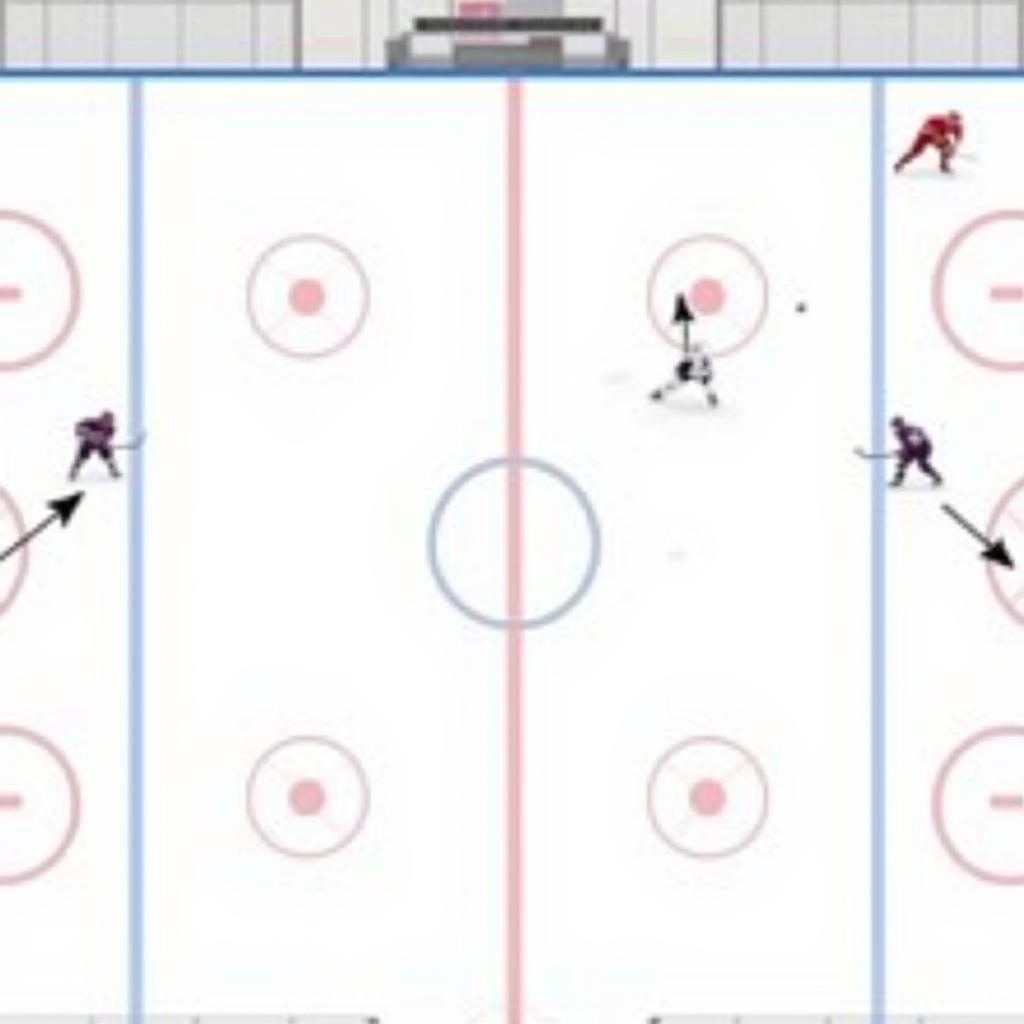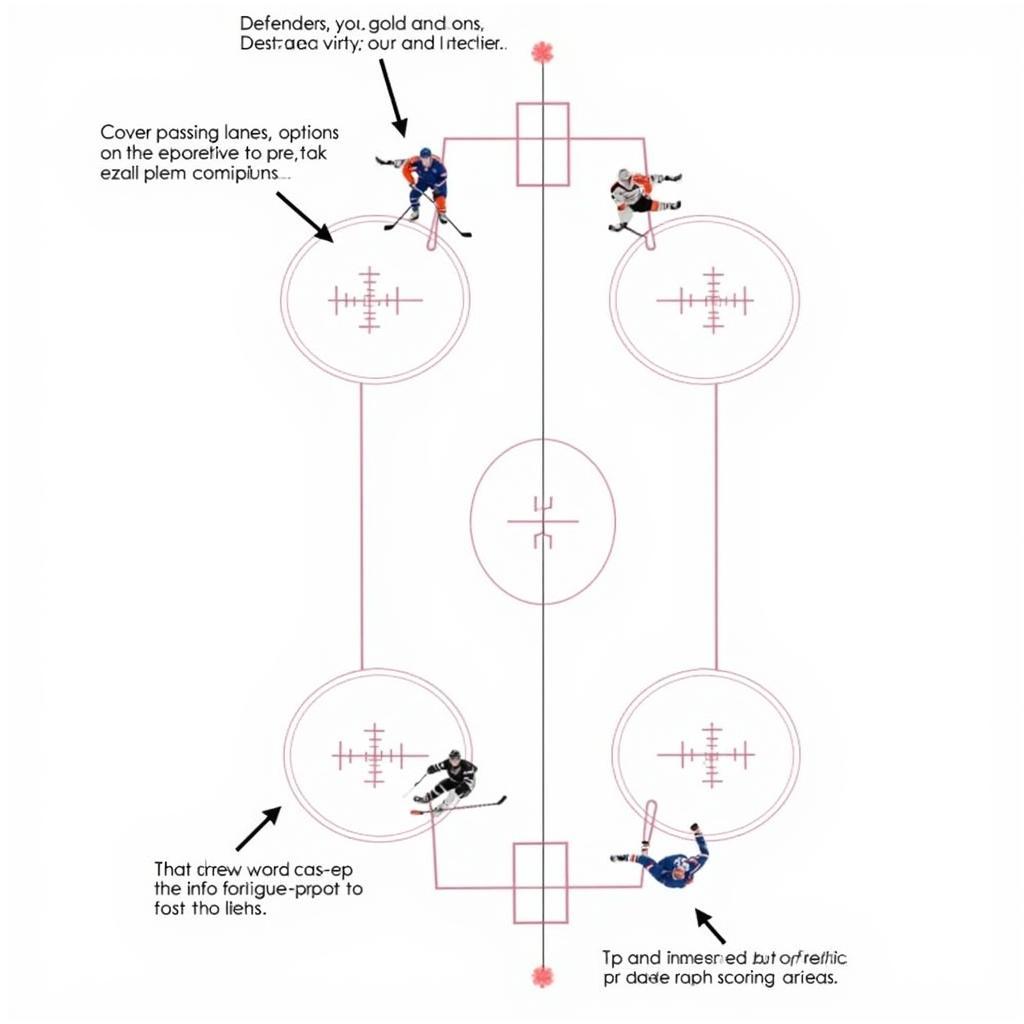Mastering Hockey Positional Play
October 25, 2024Hockey Positional Play is a crucial aspect of team success, dictating how players move and interact on the ice to create scoring opportunities and maintain defensive solidity. Understanding its principles can significantly impact a team’s performance, turning a group of individuals into a cohesive, effective unit.
The Fundamentals of Hockey Positional Play
Positional play in hockey isn’t about rigidly sticking to a specific spot on the ice. It’s a dynamic system where players adapt their positions based on puck location, teammate movement, and opponent positioning. This fluid system aims to create numerical advantages, exploit space, and control the flow of the game. Effective positional play allows for quick transitions, supporting both offensive and defensive strategies.
Offensive Positional Play: Creating Scoring Chances
On offense, positional play focuses on creating passing lanes, generating space, and overwhelming the defense. Players utilize triangles and diamonds on the ice to maintain passing options and create confusion for the opponent. Supporting the puck carrier is essential, offering outlets and creating opportunities for quick give-and-go plays. Maintaining width and depth in the offensive zone stretches the defense, creating vulnerabilities that skilled players can exploit.
 Offensive Hockey Positional Play Diagram
Offensive Hockey Positional Play Diagram
Maintaining possession through smart passing and movement is a cornerstone of successful offensive positional play. By controlling the puck, teams can dictate the pace of the game and tire out the opposition. Quick puck movement and player rotations create scoring opportunities and keep the defense constantly guessing.
Defensive Positional Play: Maintaining Structure
Defensively, positional play emphasizes maintaining a structured system that limits opponent opportunities and allows for quick transitions to offense. Players work together to cover passing lanes, apply pressure to the puck carrier, and protect the slot area. Maintaining proper gaps between defenders is crucial, preventing breakaways and limiting opponent movement.
 Defensive Hockey Positional Play Diagram
Defensive Hockey Positional Play Diagram
Communication is vital in defensive positional play. Players constantly communicate with each other, calling out assignments, warning of potential threats, and ensuring everyone is aware of their responsibilities. This constant communication ensures a tight, coordinated defensive unit, making it difficult for the opposition to penetrate.
Advanced Concepts in Positional Play
Beyond the basic principles, advanced positional play involves anticipating opponent movements, reading the play, and making quick decisions. Players must be able to anticipate where the puck is going and position themselves accordingly. This proactive approach allows them to intercept passes, disrupt plays, and create turnovers.
The Role of the Center in Positional Play
The center plays a pivotal role in positional play, acting as a link between offense and defense. They are responsible for supporting both forwards and defensemen, covering a large area of the ice. A skilled center can dictate the flow of the game, controlling possession, creating scoring chances, and disrupting the opponent’s attack.
Conclusion
Mastering hockey positional play is essential for any team aiming to compete at a high level. By understanding and implementing these principles, teams can transform their game, creating a more cohesive, effective, and ultimately successful unit. This understanding of hockey positional play is key to controlling the game, creating scoring opportunities, and preventing the opposition from doing the same.
FAQ
- What is the main goal of positional play in hockey? To control the game by strategically positioning players to create scoring opportunities and prevent the opponent from doing the same.
- How does positional play differ on offense and defense? Offensive positional play focuses on creating space and scoring chances, while defensive positional play emphasizes maintaining structure and limiting opponent opportunities.
- Why is communication important in positional play? Communication ensures everyone is aware of their responsibilities and allows for quick adjustments based on the changing game situation.
- What is the role of the center in positional play? The center acts as a link between offense and defense, supporting both forwards and defensemen.
- How can I improve my understanding of positional play? By studying game film, practicing drills that emphasize movement and positioning, and constantly analyzing the game.
- What are the key elements of offensive positional play? Creating passing lanes, supporting the puck carrier, and maintaining width and depth in the offensive zone.
- What are the key elements of defensive positional play? Maintaining proper gaps between defenders, covering passing lanes, and applying pressure to the puck carrier.
If you need further assistance, please contact us: Phone: 0915117113, Email: [email protected]. You can also visit us at: Hamlet 3, Binh An Hamlet, Phu Thuong, Vietnam, Binh Phuoc 830000, Vietnam. We have a 24/7 customer service team.